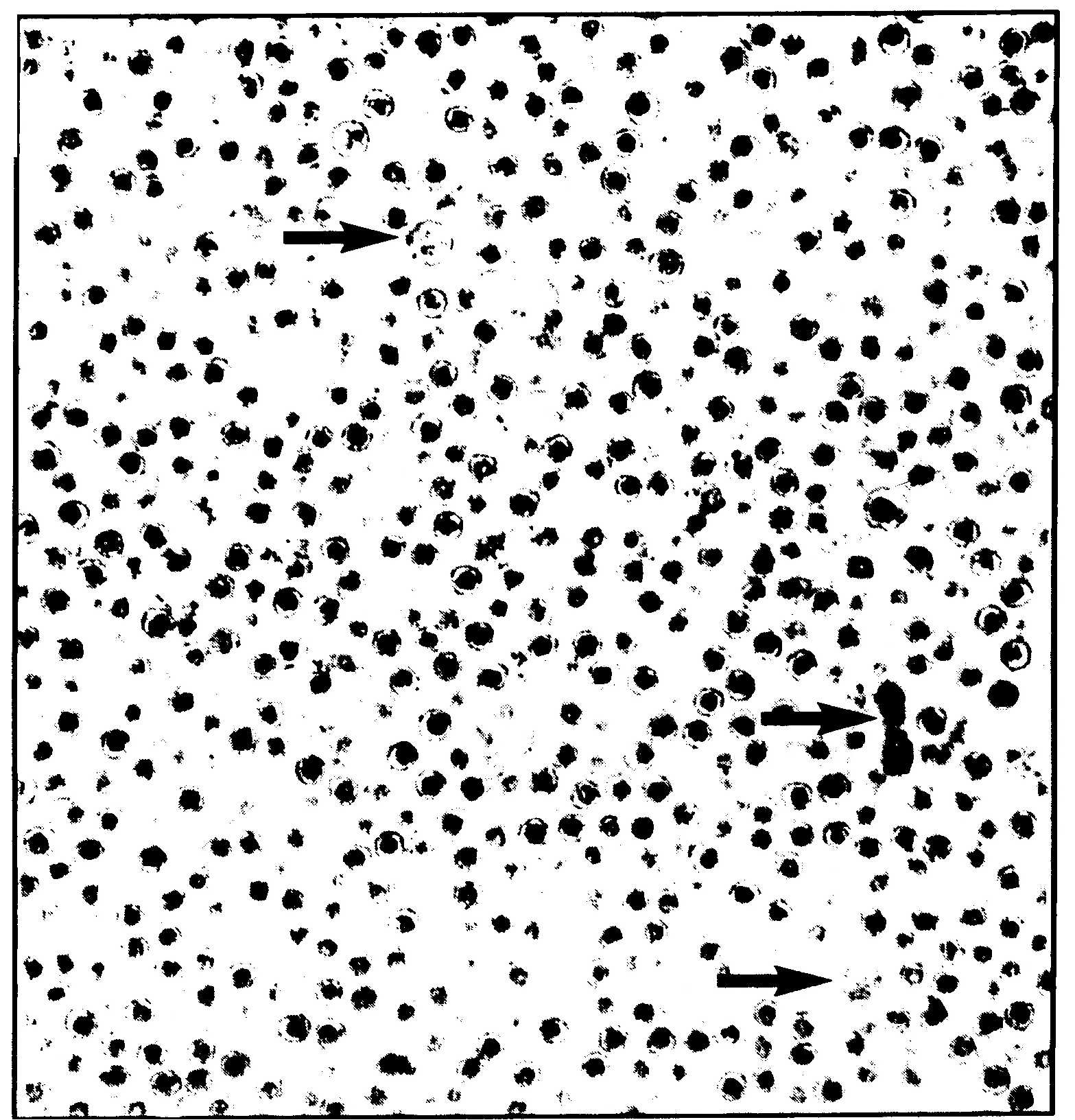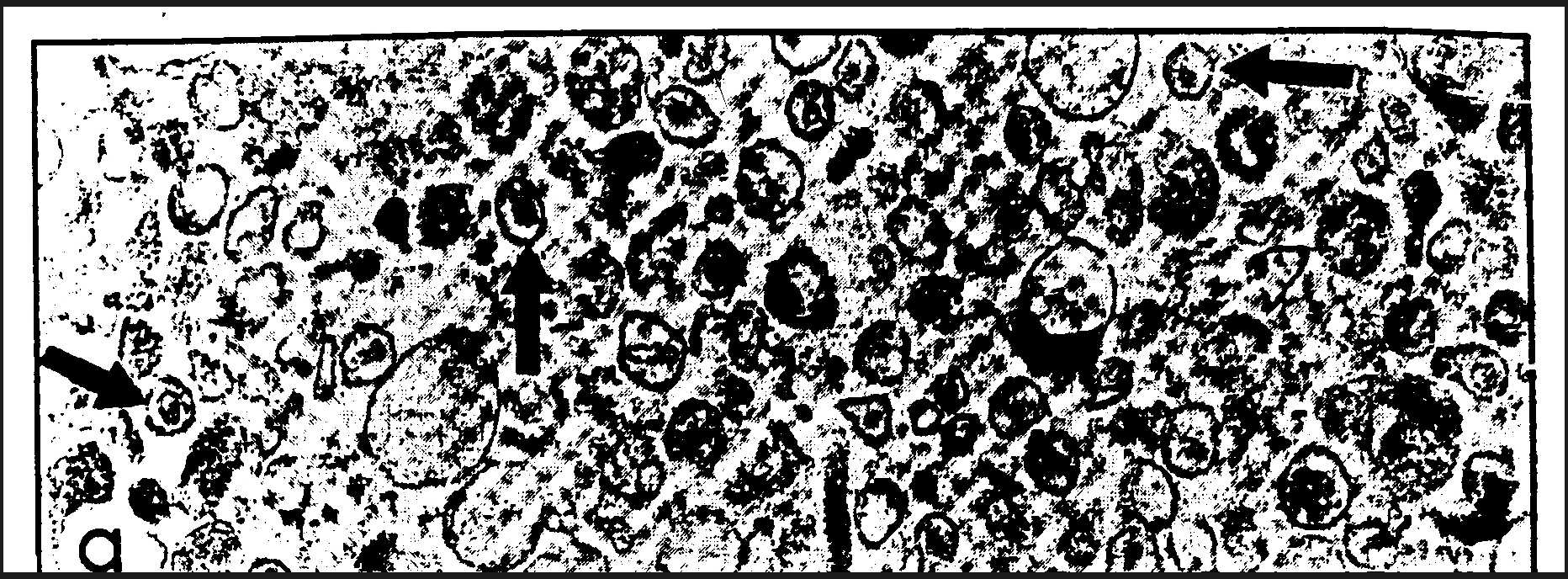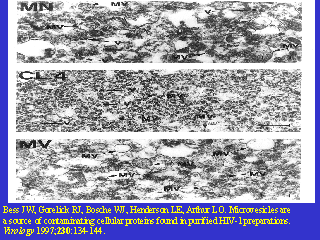
Result of attempt to isolate HIV - very few retrovirus-like particles (arrows), very many dissimilar contaminating particles.

In a similar published isolation effort by Bess, et al, the particles claimed to be retoviral were too large by a factor of 2.
